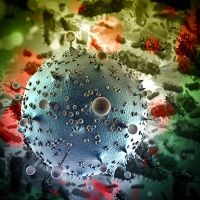New HIV Treatment Guidelines Call for Early Initiation of Antiretroviral Therapy
Consolidated guidelines from the World Health Organization recommend starting treatment when a patient's CD4 count falls below 500, and also recommend a new first-line ART regimen.

New, consolidated HIV treatment guidelines released by the World Health Organization (WHO) at the 7th International AIDS Society Conference on HIV Pathogenesis, Treatment and Prevention (IAS 2013) in Kuala Lumpur, Malaysia, include several updates to the 2010 guidelines, the most important being that antiretroviral therapy (ART) is now recommended to be initiated earlier in HIV-infected adults, adolescents, and older children; ART should be started in all individuals with a CD4 cell count of 500 cells/mm3 or less.
According to a news release from the WHO, the recommendation to initiate treatment in patients whose CD4 cell count falls to 500 cells/mm³ or less is “based on evidence that treating people with HIV earlier, with safe, affordable, and easier-to-manage medicines can both keep them healthy and lower the amount of virus in the blood, which reduces the risk of passing it to someone else.”
According to commentary on the new guidelines, published in the Journal of the International AIDS Society, the guidelines “provide more than 50 new recommendations across the continuum of HIV care, including recommendations on HIV testing, using antiretroviral drugs for prevention, linking individuals to HIV care and treatment services, initiating and maintaining antiretroviral therapy (ART) and monitoring treatment.”
The guidelines also recommend:
- Starting ART at any CD4 cell count in certain populations, including those with active tuberculosis, Hepatitis B and severe chronic liver disease, HIV-positive partners in serodiscordant couples, pregnant and breastfeeding women, and children younger than 5 years of age
- The preferred first-line ART regimen for adults, pregnant women, and children age 3 years and older is a once-daily fixed-dose combination of tenofovir, lamivudine or emtricitabine, and efavirenz
- In children less than 3 years of age, a lopinavir-based regimen is recommended as first-line ART, regardless of NNRTI exposure
- Viral load testing is the preferred approach to monitoring the response to ART and to diagnose treatment failure
Guidance is also provided on “enhancing the efficiency and effectiveness of HIV services, including strategies to improve retention in care, and adherence to ART; task-shifting to address human resource gaps; decentralizing delivery of ART to primary health care, and integrating ART services within maternal and child health, TB or drug dependency clinics.”
The authors of the commentary linked above also note that “The recommendations for second-line regimens in 2013 remain unchanged since 2010, with heat-stable fixed-dose combinations, and atazanavir/ritonavir and lopinavir/ritonavir as the preferred boosted protease inhibitor (PI) options. However, WHO may include darunavir/ritonavir as an alternative PI option should there be a reduction in cost and a heat-stable fixed-dose combination tablet developed. The need to phase out stavudine in first-line ART regimens for adults and adolescents is further reinforced.”
The complete “Consolidated Guidelines on the Use of Antiretroviral Drugs for Treating and Preventing HIV Infection” are available for download at the WHO website.
2 Commerce Drive
Cranbury, NJ 08512
All rights reserved.